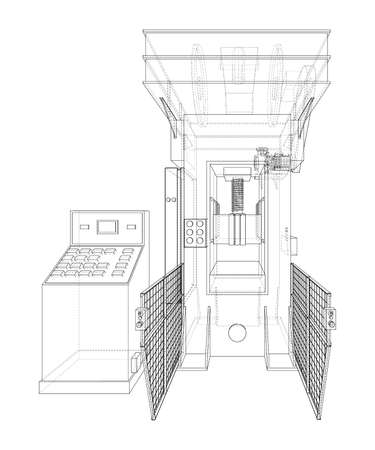1. Understanding the Charm and Challenges of Historic British Homes
Britain’s historic homes are renowned for their enduring charm, from elegant Georgian townhouses to quaint Victorian terraces and rustic Edwardian cottages. These period properties offer a rich tapestry of original features—ornate cornices, sash windows, fireplaces, and timber beams—that define their architectural character. However, this unique heritage also presents challenges when considering modern upgrades such as energy-saving lighting. Many older properties fall within conservation areas or hold listed status, meaning that any retrofit must be approached with sensitivity and respect for preservation guidelines. Homeowners need to navigate a complex web of restrictions designed to protect the historical integrity of these buildings, which often means that traditional wiring routes or disruptive installations are not possible. The key lies in understanding how to enhance comfort and efficiency while honouring the craftsmanship and stories embedded in every corner. Retrofitting energy-efficient lighting becomes not only a technical task but a design-led opportunity—balancing sustainability with the timeless beauty that makes British homes so beloved.
2. Assessing Existing Lighting and Wiring Systems
Before embarking on any retrofit project in a traditional British home, its essential to conduct a thorough assessment of the current lighting and wiring infrastructure. Older properties—whether Georgian townhouses or Victorian terraces—often present unique challenges, from dated electrical systems to architectural quirks like draughty sash windows and impressively high ceilings.
Guidance for Safe Surveying
The first step is always safety. If you’re unfamiliar with electrical systems, consult a certified electrician registered with a UK governing body such as NICEIC or NAPIT. Remember, tampering with electrics without proper qualifications can be dangerous and may breach UK regulations. Check for visible signs of outdated wiring—such as fabric-coated cables or old-style fuse boxes—and ensure all work will comply with Part P of the Building Regulations.
Key Areas to Inspect
| Area | Potential Issues | Considerations |
|---|---|---|
| Sockets & Switches | Old bakelite fittings; worn-out switches | Upgrade to modern, energy-rated alternatives |
| Circuitry | Non-RCD protected circuits; overloaded rings | Install RCDs for safety and compliance |
| Light Fittings | Inefficient incandescent bulbs; poor placement | Plan for LED upgrades and optimal positioning |
| Sash Windows & High Ceilings | Draughts causing heat loss; difficult access for fittings | Seal draughts, use remote-controlled or longer-life bulbs for hard-to-reach spots |
Pain Points Specific to British Homes
Bespoke features like period mouldings and alcoves can limit where new lights can be installed. Additionally, older homes often have unpredictable wall construction (lathe and plaster versus brick), so drilling or rewiring requires extra care to avoid structural damage. Be mindful of listed building status, as this could restrict modifications—always check with your local council if you’re unsure.

3. Choosing the Right Modern Lighting for Period Properties
Retrofitting historic British homes requires a careful balance between preserving period charm and embracing energy efficiency. When selecting modern lighting, opt for LED retrofits, which offer significant energy savings and longer lifespans while fitting traditional lamp holders or fixtures. Look for LED bulbs with warm colour temperatures (around 2700K–3000K) to complement the inviting glow typical of Victorian, Edwardian, or Georgian interiors.
Smart Controls for Contemporary Living
Integrating smart switches and dimmers provides versatility and control without compromising heritage aesthetics. Many smart systems are designed to be discrete, allowing you to retain original wall plates or use period-style covers that blend seamlessly with ornate mouldings, cornices, or wood panelling common in British homes.
Respecting Original Features
When choosing fittings, prioritise options that highlight the unique architectural details of your property. For example, select minimalist LED spotlights for highlighting ceiling roses or intricate coving, or retrofit picture lights to accentuate art and alcoves. Where possible, avoid cutting into original plasterwork by using surface-mounted fittings or existing wiring routes.
Sourcing Fixtures Suited to British Style
Seek out reputable UK suppliers offering LED bulbs and smart accessories in classic finishes—antique brass, matte black, or porcelain—that echo the home’s age while delivering contemporary performance. Matching fixture style with era-appropriate shapes ensures your new lighting feels authentic yet efficient. With thoughtful choices, you can enjoy modern comfort and sustainability without sacrificing the timeless character that makes British period homes truly special.
4. Fitting Solutions: Installation Tips for Old Structures
Retrofitting period British homes with contemporary, energy-saving lighting involves more than simply replacing light bulbs. The unique character of older properties—particularly those built with lath-and-plaster walls and ornate mouldings—demands careful planning to ensure both functionality and preservation. Below are practical strategies to discreetly integrate new wiring and fittings without compromising the home’s original features.
Hiding or Integrating New Wiring
Exposed cabling can undermine the historic charm of an old British home. Where possible, run new wires through existing voids, such as under floorboards or behind skirting boards. In cases where surface wiring is unavoidable, consider using decorative conduit or trunking painted to match the wall colour, blending modern technology seamlessly into traditional spaces.
Working with Lath-and-Plaster Walls
Lath-and-plaster construction is fragile compared to modern drywall, so take extra care when installing new lighting. Use a stud finder to avoid damaging original timber supports. For pendant lights or chandeliers, always anchor fittings into ceiling joists rather than just the plaster layer. If creating new openings for switches or downlights, employ a sharp utility knife and gentle pressure to minimise cracking and preserve the integrity of the plasterwork.
Selecting Character-Preserving Fittings
Choosing sympathetic fixtures is crucial for maintaining the ambiance of a period property. Many UK suppliers offer LED-compatible fittings in classic styles—from Victorian-inspired sconces to Art Deco pendants—ensuring you don’t have to sacrifice aesthetics for efficiency.
| Challenge | Solution | Recommended Approach |
|---|---|---|
| Visible wiring | Conceal in architectural features or use paintable trunking | Plan routes during other renovations for minimal disruption |
| Lath-and-plaster fragility | Careful drilling and specialist fixings | Anchor heavy fittings in joists; use shallow back boxes for switches |
| Maintaining character | Traditional-style LED fittings | Select period-appropriate finishes and shapes from reputable UK brands |
Expert Tip:
If you’re unsure about your property’s structure or electrical safety standards (such as Part P compliance), consult a NICEIC-registered electrician familiar with heritage homes. This ensures your retrofit preserves both beauty and safety for years to come.
5. Balancing Heritage Aesthetics with Contemporary Sustainability
One of the most rewarding challenges when retrofitting old British homes is achieving harmony between cherished architectural details and modern energy-saving lighting. These period properties often boast exquisite features—think ornate cornices, delicate ceiling roses, or intricate mouldings—that deserve to be celebrated, not overshadowed. The key is subtlety: opt for discreet LED strips or slimline downlights that tuck away into alcoves, recesses, or behind coving. This approach softly uplifts traditional elements without drawing undue attention to the technology itself.
For example, installing dimmable LED uplighters in bay windows or along picture rails can enhance decorative plasterwork and provide a gentle, atmospheric glow reminiscent of classic candlelit interiors. Consider using warm white bulbs with a colour temperature around 2700K to create that signature cosy British ambiance, perfect for unwinding after a rainy day.
When dealing with ceiling roses, ultra-slim LED pendant kits allow you to preserve their beauty while delivering efficient illumination. Choose fixtures in heritage finishes—like antique brass or matte black—to echo existing ironmongery and period character. For wall sconces or table lamps, retrofit compatible LED bulbs ensure you keep beloved vintage fittings but dramatically reduce energy consumption.
Ultimately, successful lighting design in old British homes means respecting their narrative while enhancing comfort and sustainability for modern living. By thoughtfully integrating advanced lighting solutions with classic aesthetics, you create spaces that remain warm and inviting—a true reflection of British style at its best.
6. Complying with UK Standards and Sustainable Practices
When retrofitting old British homes with modern, energy-saving lighting, it’s crucial to ensure that all upgrades meet current UK building regulations and sustainability guidelines. Adhering to these standards not only guarantees the safety and efficiency of your lighting installations but also protects the unique character of period properties. It’s important to consult local authority guidelines and seek advice from certified professionals familiar with listed buildings or conservation areas.
Understanding Building Regulations and Energy Advice Schemes
UK building regulations set out specific requirements for electrical work, energy efficiency, and fire safety. For lighting retrofits, this includes using LED fixtures that meet minimum efficacy standards and ensuring that all wiring complies with Part P of the Building Regulations. Homeowners can benefit from free or subsidised energy advice schemes offered by local councils or organisations such as the Energy Saving Trust. These services provide tailored recommendations on lighting upgrades that balance heritage considerations with modern sustainability goals.
Making the Most of Government Incentives
To encourage energy-efficient home improvements, the UK government offers various incentives and grants. Programmes like the Great British Insulation Scheme or local Green Deal initiatives may help offset the costs of upgrading to smart, low-energy lighting solutions. Always check eligibility criteria and application deadlines to make sure you don’t miss out on potential funding. Taking advantage of these opportunities not only makes your retrofit more affordable but also contributes positively to national carbon reduction targets.
Embracing Sustainable Retrofits for Lasting Value
By complying with UK standards and embracing sustainable practices, homeowners can future-proof their historic properties while maintaining their distinctive charm. Modern energy-saving lighting brings both economic and environmental benefits, from reduced electricity bills to a smaller carbon footprint. Ultimately, thoughtful retrofitting ensures that treasured British homes remain comfortable, efficient, and beautiful for generations to come.


